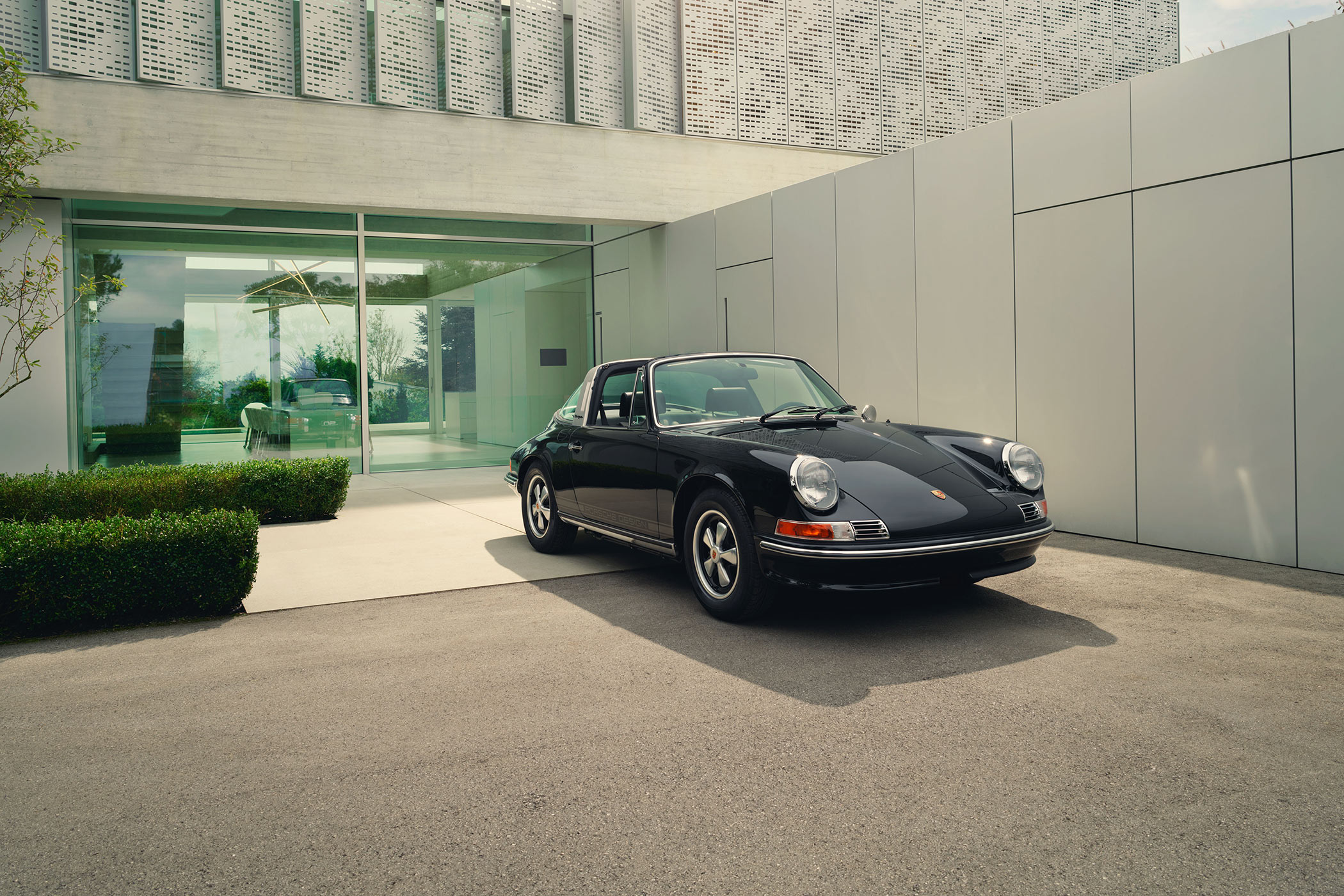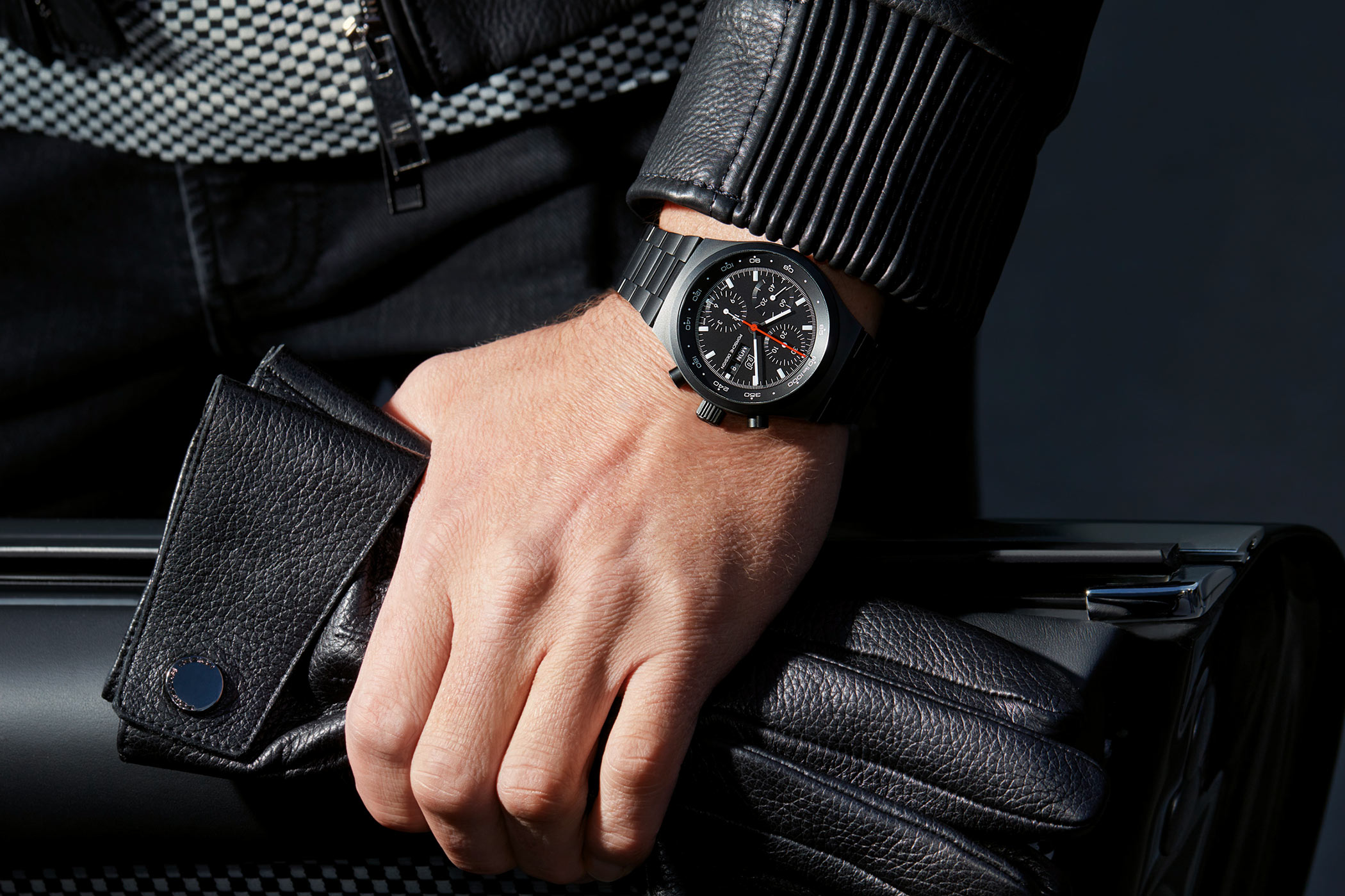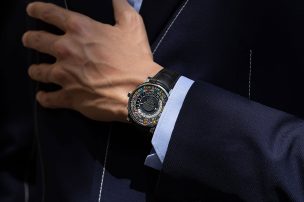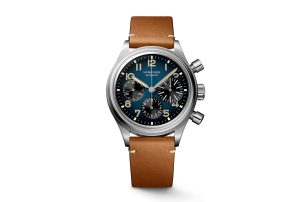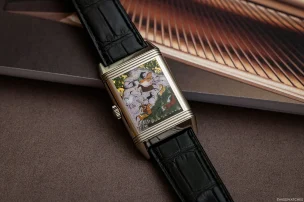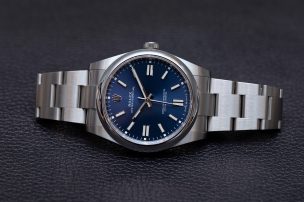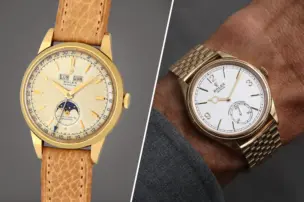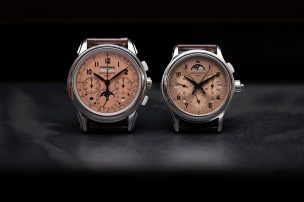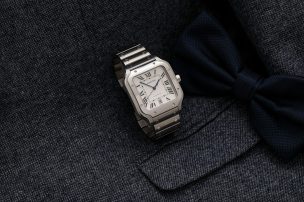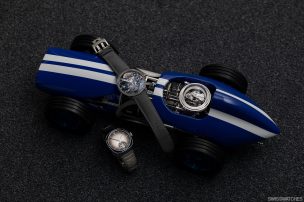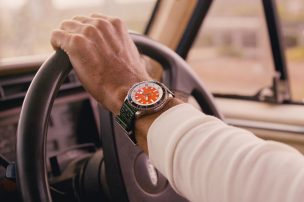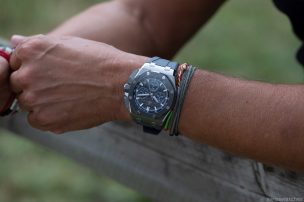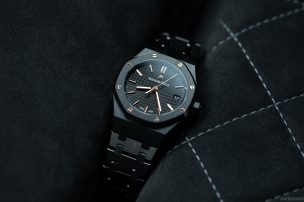
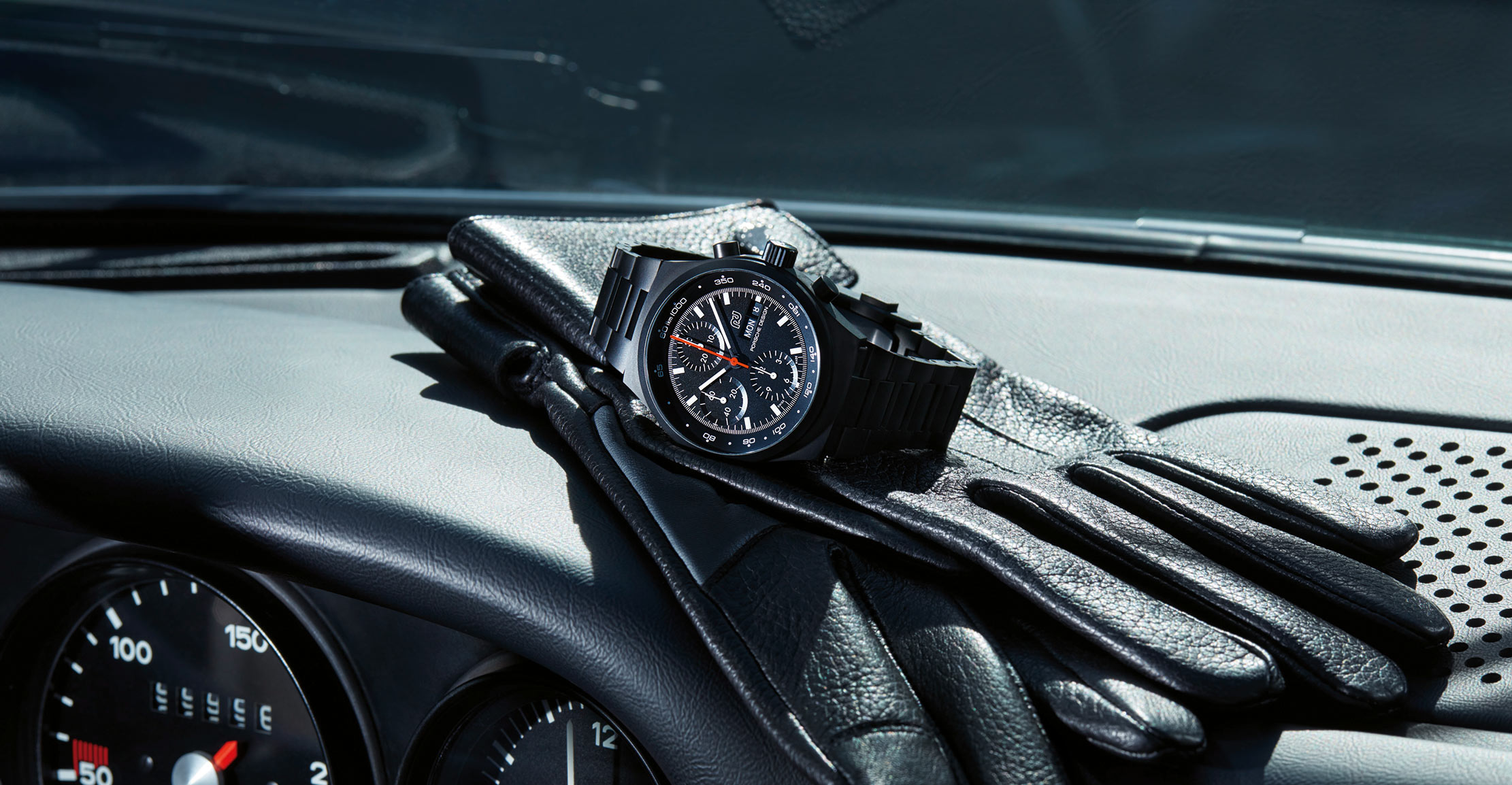
Porsche Design and the Chronograph 1 – 1972 Limited Edition: The Legendary First Black Watch Returns
The Porsche Design Chronograph 1, launched in 1972, is regarded as the world’s first entirely black wristwatch and went on to define an entire era of watch design. Fifty years later, Porsche Design is now presenting the Chronograph 1 – 1972 Limited Edition, a reissue limited to 500 pieces that unites Ferdinand Alexander Porsche’s iconic design with state-of-the-art technology.
To understand the legend that is Porsche, it is worth looking at the world through a child’s eyes. For example, the three-year-old son of a couple who are friends of mine, who cheers ‘Porsche!’ every single time he sees a 911 in traffic. This reminds me of my own behaviour many, many years ago. But it’s not the point here; what’s more important is that the design language of the Zuffenhausen-based brand has shaped generations of sports car drivers. ‘Porsche!’ is the epitome of sports cars, of progressiveness, of constantly striving forward. And once you’ve fallen for the legend that is Porsche, you most likely also can’t get past Porsche Design and its timepieces, with their appealing, functional Porsche aesthetics.

Just as the 911 of 1963 can be considered the forefather of all 911s, the Chronograph I from 1972 must be regarded as the first and thus ultimate Porsche Design watch ever. And today, 50 years after the original watch design by F.A. Porsche, it is precisely this watch that is being presented in a new edition: As Chronograph 1 – 1972 Limited Edition.
Roland Heiler: ‘This watch was missing – and now it’s back.’
Roland Heiler, Managing Director of the Design Studio F.A. Porsche, explains the significance of the reissue: the Chronograph 1 was never simply a watch, but the very foundation of the entire Porsche Design philosophy.
This watch has been missing – and now it is back.
Roland Heiler, Managing Director, Design Studio F.A. Porsche
50 years of Chronograph 1: Old look, new watch
After all, an anniversary of five decades does need to be celebrated. At the same time, however, such a birthday also provides an opportunity to pause and reflect. Simultaneously looking back and looking forward provides a good opportunity for every jubilarian to reflect on their special strengths. Porsche Design is no different than any other 50-year-old. The Chronograph 1 – 1972 Limited Edition therefore combines the feeling of the 1970s with the forward drive of the 2020s in general, and that of Porsche Design in particular.
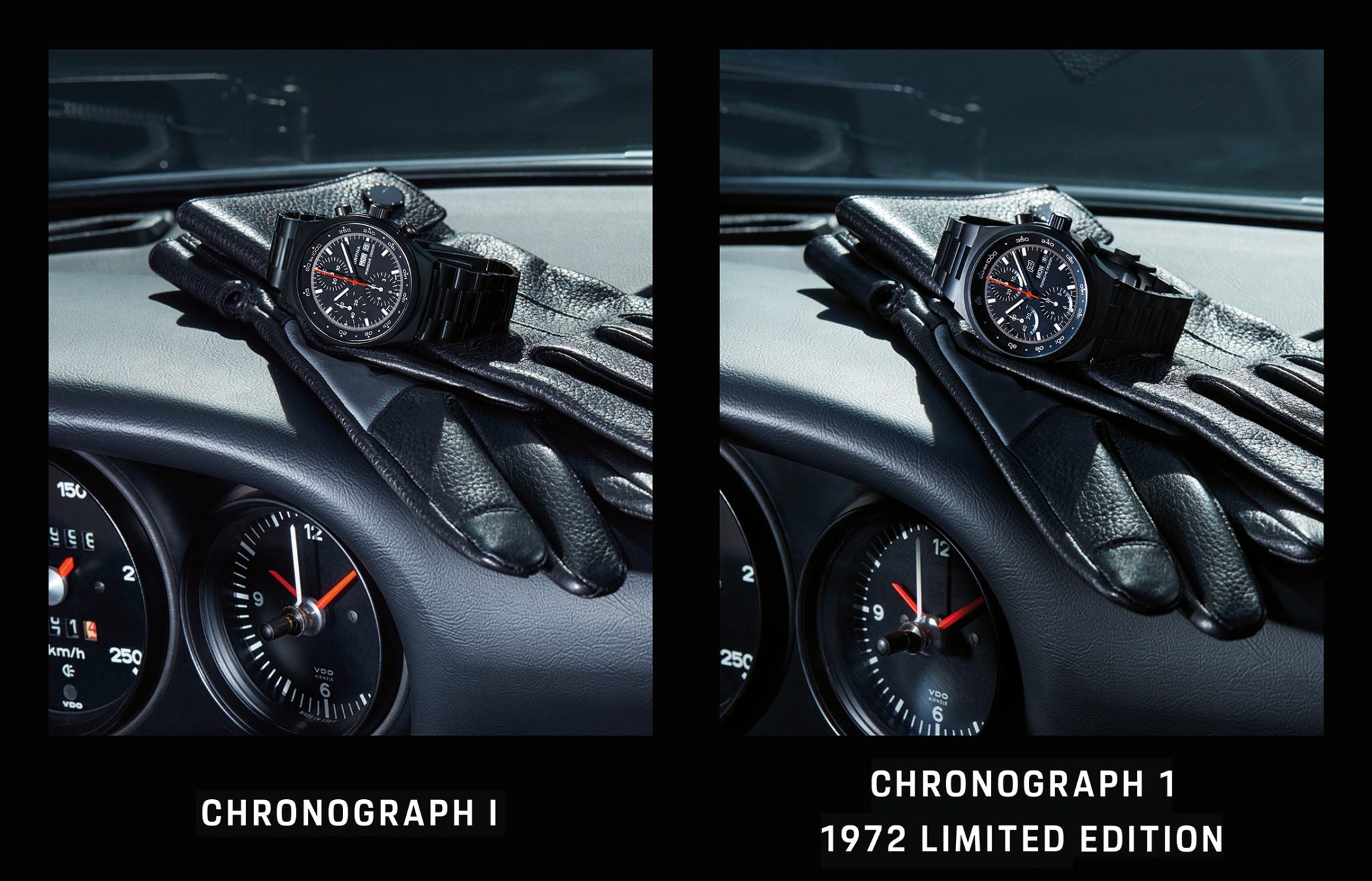
Or as Roland Heiler, the managing director of Design Studio F.A. Porsche, explains it in conversation, ‘This watch was missing – and now it’s back.’ After all, there are few watch brands that would neglect to include their first and highly successful model in its portfolio – it would simply make no sense. According to Heiler, ‘That’s why we don’t view the new timepiece as a watch with a retro or vintage look, but rather, we finally have a model on board once more that was truly missed for many years.’ And while it may look exactly like the original watch from 1972, it has most definitely been brought into the modern era.
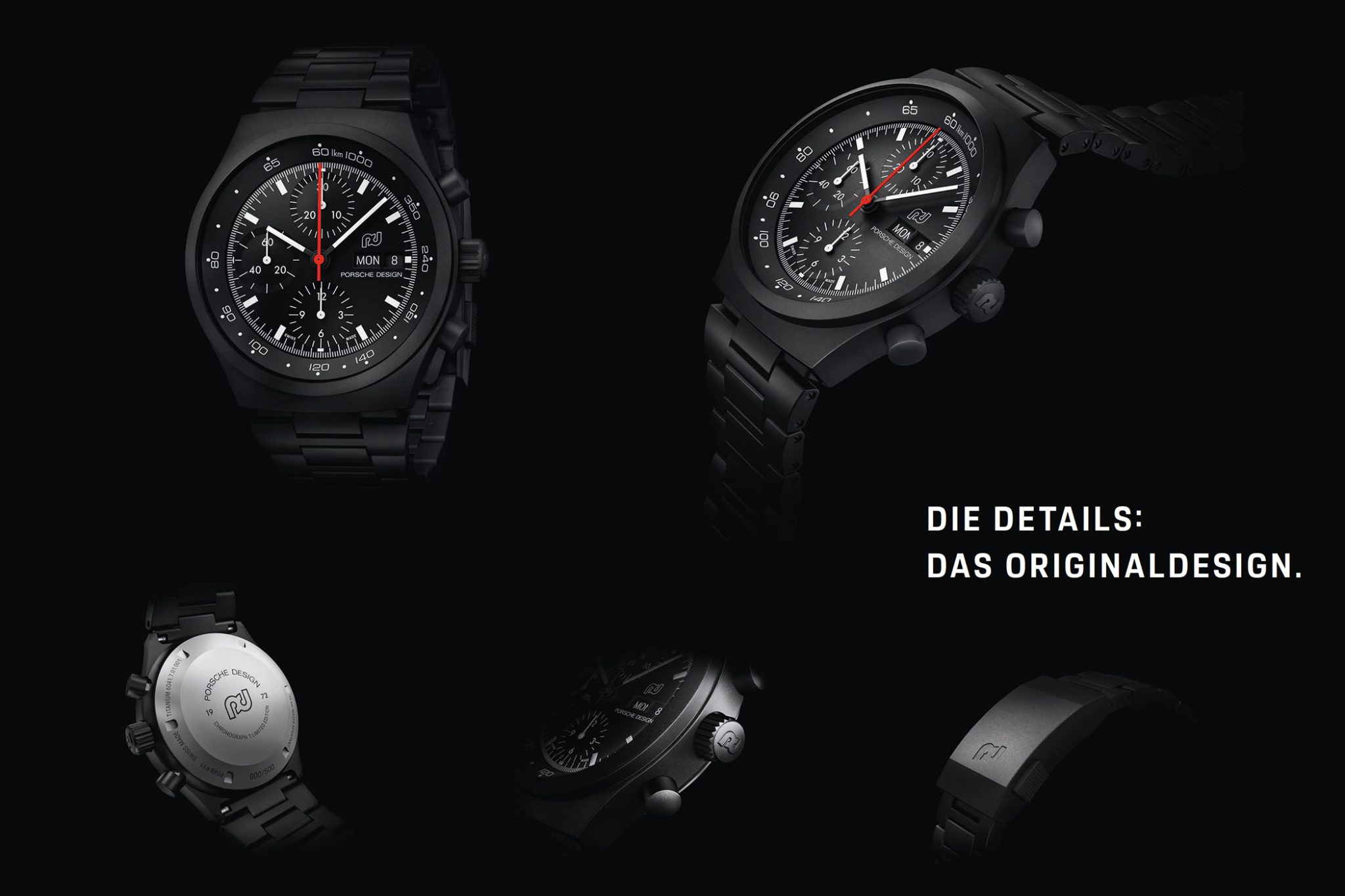
Chronograph 1 Limited Edition technical details: titanium instead of stainless steel
The Porsche Design Chronograph 1 Limited Edition, limited to just 500 pieces, combines authentic 1970s design with state-of-the-art watchmaking. While the exterior remains true to the original, cutting-edge technology beats within.
Technical upgrades of the Limited Edition:
- Case: Titanium instead of stainless steel (as on the original)
- Diameter: 40.8 mm (closer to the original than previous reissues)
- Height: 14.5 mm
- Movement: Calibre WERK 01.140 (instead of the historic Lemania 5100)
- Limited to: 500 pieces
- Price: 6,972 euros
- Tachymeter scale: Faithful 1972 typography
The contemporary qualities of the limited-edition model are hidden from view and can only really be felt. For example, while the tachymeter scale, day and date display keep the exact typography from 1972, the case, bracelet and clasp are now made of titanium, while the original Chronograph I was made of stainless steel. Likewise, the new model is powered by the WERK 01.140 calibre, while a Lemania 5100 was at play in the very first Porsche Design chronographs.
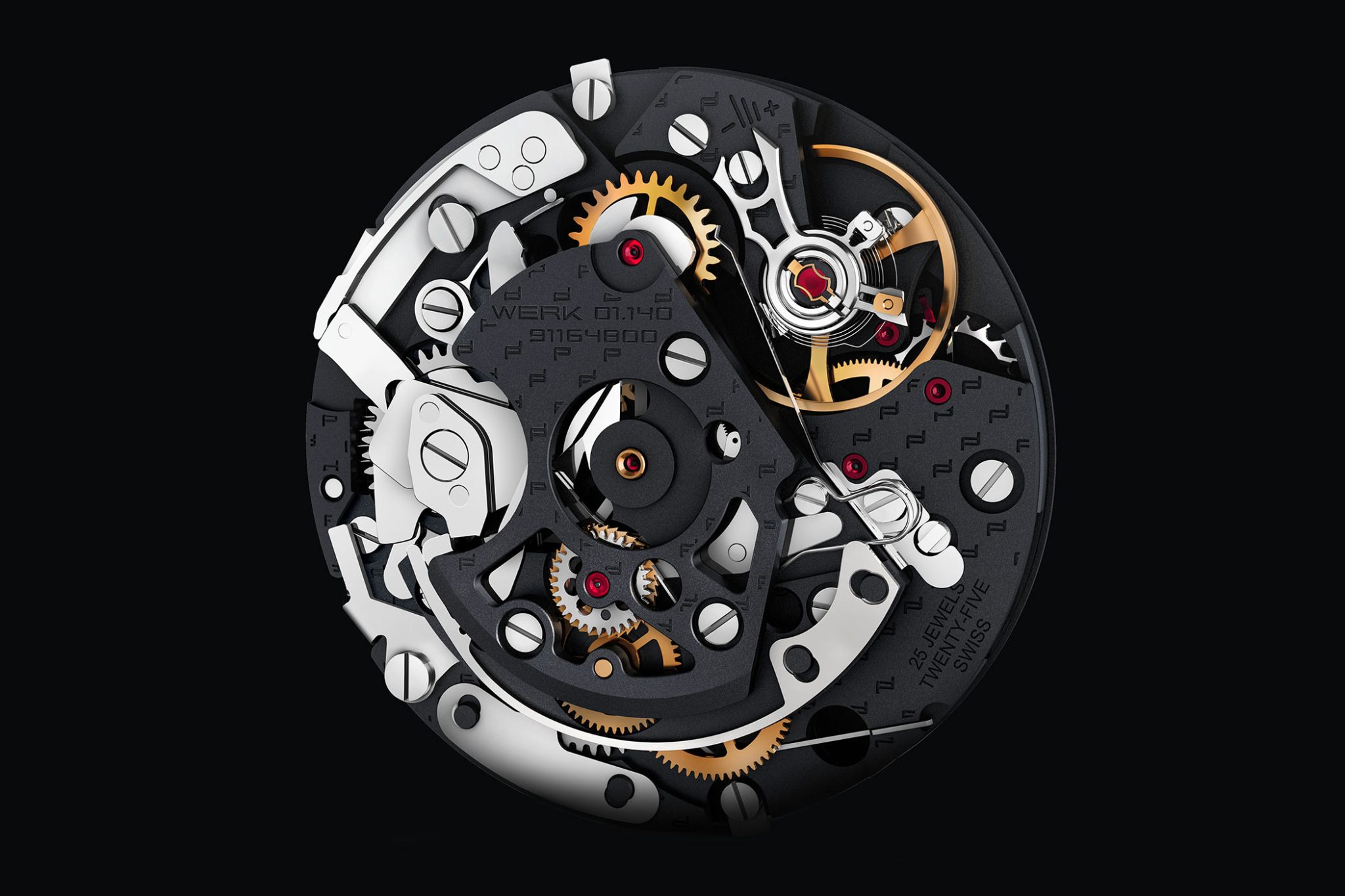
Porsche Design Size Comparison: Chronograph 1 Variants
| Modell | Year | Diameter | Material | Limitation | Specifics |
| Original Chronograph I | 1972 | 38 mm | Stainless Steel | Unlimited | First black watch in the world |
| Timepiece No. 1 | 2014 | N/A | Titanium | 500 pieces | Hommage to the design code |
| P’6510 Heritage Black | N/A | 44 mm | N/A | 911 pieces | Significantly larger |
| Chronograph 1 – 1972 LE | 2022 | 40,8 mm | Titanium | 500 pieces | Most faithful to the original |
Now, friends of the brand know that Porsche Design has often paid homage to the original model and adopted design codes of the Chronograph 1 in the past, for example, in the 500 pieces of the ‘Timepiece No. 1’ from 2014, or when Porsche Design presented the P`6510 Heritage Black Chronograph 1972 Limited Edition in a limited edition of 911 pieces, which, with a diameter of 44 mm, sat much more majestically on the wrist than the original with its 38 mm diameter.
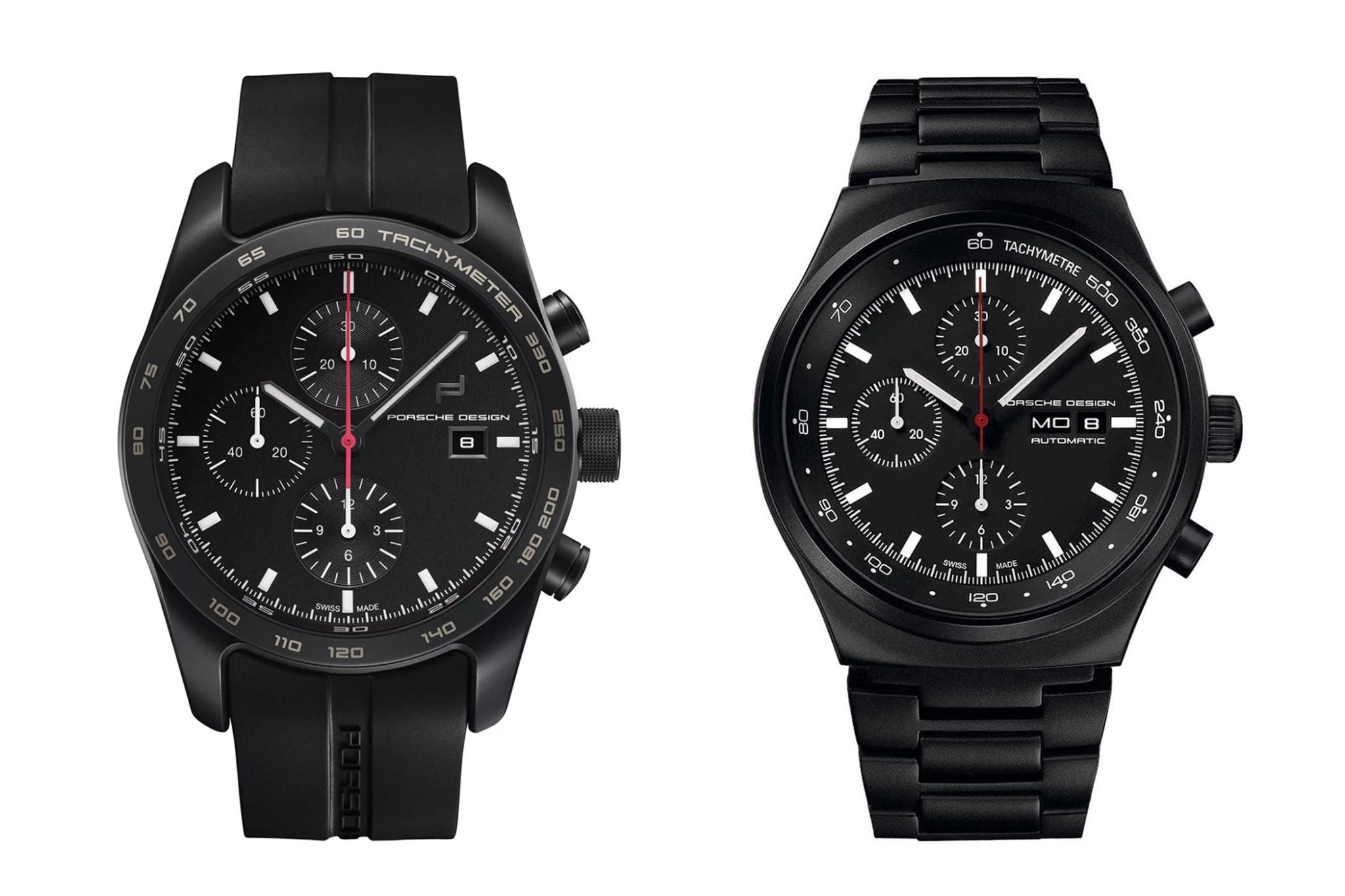
Timepiece No. 1 Chronograph Titanium Limited Edition (Left)
P’6510 Heritage Black Chronograph 1972 Limited Edition (Right)
The 21st Century Chronograph 1 features a much smaller and more coherent diameter of 40.8 mm, with a height of 14.5 mm. Probably no watch in recent Porsche Design history has ever been produced so closely to a historical model – which was fittingly presented together with a lovingly restored 911 S 2.4 Targa from 1972 – making the model something very special.
The Great Legacy: Ferdinand Alexander Porsche and the World’s First Black Watch
The Chronograph 1 from 1972 is more than just a watch. It embodies the very essence of Porsche Design and the vision of Ferdinand Alexander Porsche, the designer of the legendary Porsche 911. As the world’s first entirely black wristwatch, it revolutionised watch design.
In 1972, Ferdinand Alexander Porsche founded his design studio in Stuttgart. His very first commission was the Chronograph 1, originally intended as a gift for dedicated employees of Porsche AG. That it was not to be the conventional ‘gold watch’ typical of other companies speaks volumes about both the confidence and ambition of the Porsche team.
Optimize function. Reduce the form right down to the essentials. Overcome the familiar to continually discover new and exceptional solutions.
Professor Ferdinand Alexander Porsche, founder of Porsche Design
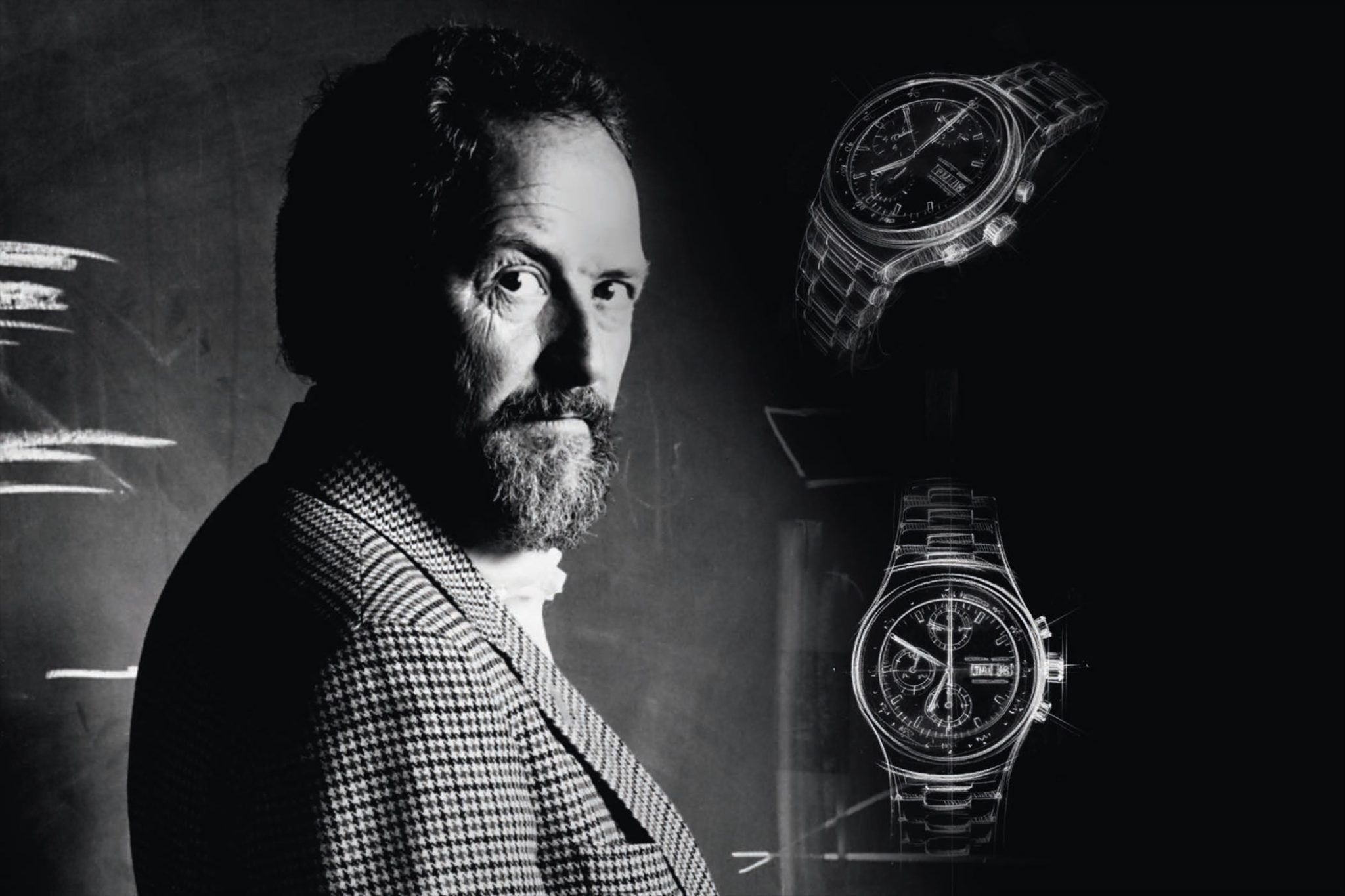
The World’s First Black Watch: The Design Revolution from 1972
The Porsche Design Chronograph I was not just another luxury watch, but a horological revolution. With its all-black design, Ferdinand Alexander Porsche created a completely new type of watch, inspired by the dashboard of the Porsche 911.
The Chronograph I was a timepiece the likes of which no one had ever designed before. For starters, the design by F.A. Porsche is considered the world’s first completely black watch. With this watch, the designer of the 911 transferred his ideas from the world of sports car design to a watch: inspired by the view of the dashboard of a 911, he created a watch with maximum functionality and an extremely modern look. It integrated a tachymeter scale, 30-minute counter at twelve o’clock, 12-hour counter at six o’clock and seconds display at nine o’clock. The white numerals on the matte black dial guaranteed maximum legibility, while reflections were eliminated by the black-on-black look.
Design features of the original Chronograph I:
- Tachymeter scale for speed measurement
- 30-minute counter at 12 o’clock
- 12-hour counter at 6 o’clock
- Seconds display at 9 o’clock
- White numerals on a matte black dial
- Glare-free readability thanks to the black-on-black design
- Powder-coated finish for the black appearance

Porsche Design Chronograph I from 1972
Its unique aesthetic made the Chronograph I nothing less than a horological sensation, paving the way for a trend that would become mainstream over the years. From the Heuer Monaco ‘Dark Lord’ and customizers like the Bamford Watch Department or MAD Paris to today’s numerous black ceramic models from OMEGA and Hublot: while ubiquitous today, it was daringly different in 1972.
Military & NATO: Chronograph I in Service Worldwide
The Porsche Design Chronograph I conquered not only civilian wrists but also became the watch of choice for various military units. Its high functionality and perfect legibility made it the ideal military timepiece.
Unlike other models that are considered iconic today, the Chronograph I, with its black powder coating, was quite the sales success right from the start. It was different without being polarizing. As with the 911, F.A. Porsche created an extremely unusual, but also attractive and successful product. Tens of thousands of units were produced – and that in the midst of the quartz crisis. Initially, the Chronograph I was equipped with a Lemania movement (the Reference 7176s), and later with the Valjoux / ETA 7750. It was manufactured by the Swiss company Orfina. Racing legend Mario Andretti wore Porsche Design, and later, so did Tom Cruise in Top Gun.
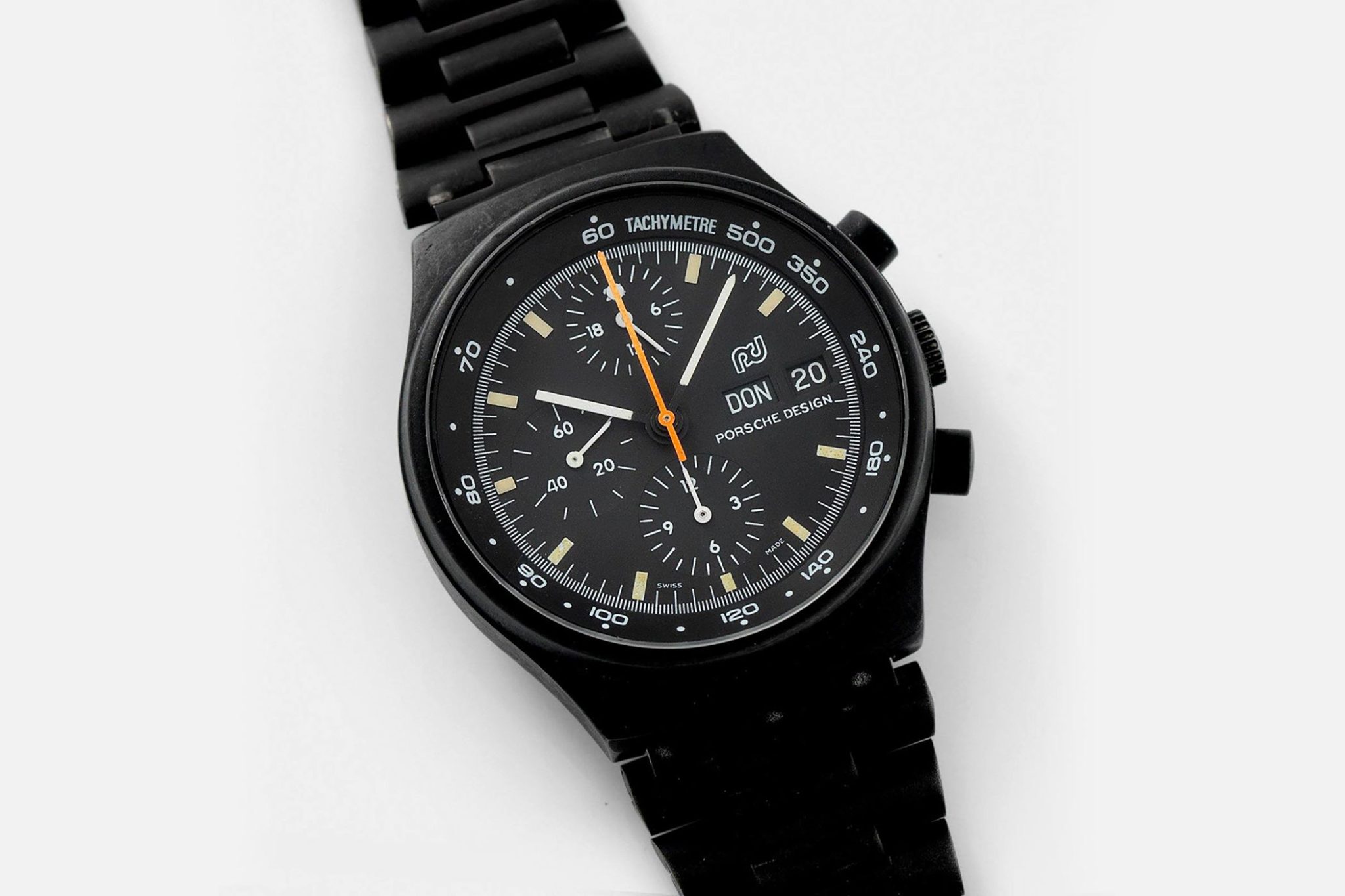
Porsche Design Orfina Ref. 7176s Chronograph (Lemania 5100)
Credit: bulangandsons.eu
Tom Cruise in Top Gun & Celebrity Endorsements: Hollywood Meets Horology
The Porsche Design Chronograph I achieved cult status thanks to its high-profile wearers. From Formula 1 World Champion Mario Andretti to Tom Cruise in the iconic film Top Gun (1986), the black watch became a symbol of both coolness and functionality.
Notable Chronograph I wearers:
- Mario Andretti (1978 Formula 1 World Champion)
- Tom Cruise (Top Gun, 1986)
- Niki Lauda (racing legend)
- Emerson Fittipaldi (Formula 1 Champion)
- Gianni Agnelli (Ferrari executive)
Roland Heiler describes the significance of the model as follows: ‘The coolness factor of the Chronograph I was pretty decisive in shaping the brand. And interestingly enough, this was nothing artificially imposed; after all, Mr. Porsche was still designing the cars at Porsche just a few months earlier and was therefore right in the middle of the whole automotive scene, from the 917 racing car to the new 911’s development. He simply looked at watches in a completely different way than others focusing on the design aspect might have done.’

The watch worn by Tom Cruise in the film Top Gun (1986) is an Orfina Porsche Design.
Porsche Design Collector Market: Vintage Chronograph 1 Variants and Value Appreciation
The vintage Porsche Design Chronograph I has become a highly sought-after collector’s item. Various military editions, NATO models, and Orfina versions now command premium prices on the vintage watch market.
The historic Chronograph I thus played a major role in the formation of Porsche Design’s horological DNA. The company’s later cooperation with IWC and the resulting timepieces would be inconceivable without this model, as would the establishment of an in-house watch division in Solothurn, Switzerland, where the new models are now conceived and manufactured. Furthermore, although the watch was produced in not exactly small numbers at the time, it has a steadily growing value for collectors and Porsche enthusiasts. After all, well-preserved chronographs from back then are rare, because unlike today, the powder coating was not as resistant back then/ Therefore, new-old-stock models are fetching ever higher prices in the vintage market.
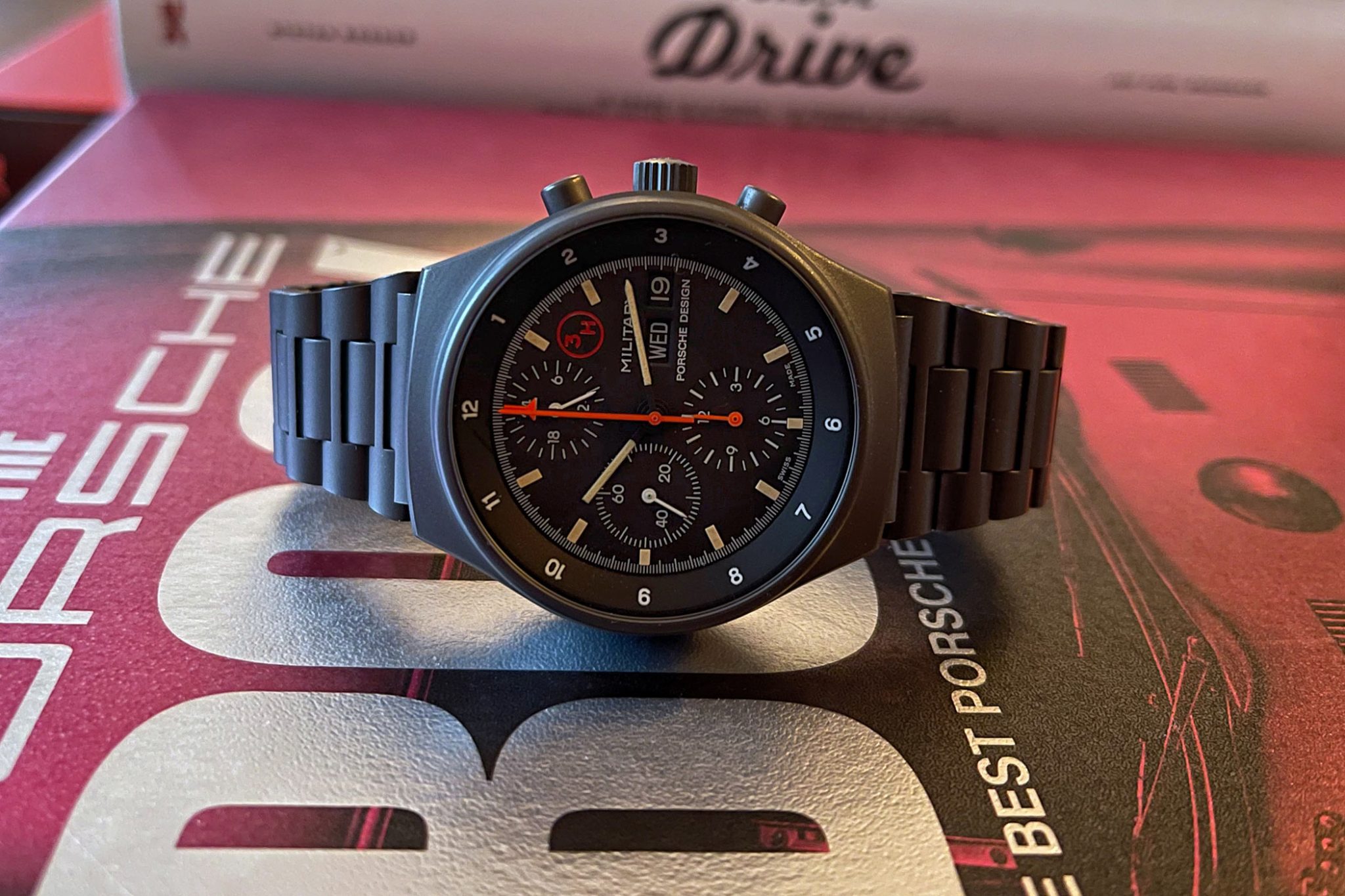
Military Chronograph Variations: NATO, Military MK II and Tritium Models
The vintage Porsche Design Chronograph I has become a highly sought-after collector’s item. Various military editions, NATO models, and Orfina versions now command premium prices on the vintage watch market.
Rare Chronograph I Variants:
- Military editions: Identified by the ‘Military’ inscription
- Tritium models: Red ‘3H’ symbol (low-level radioactive luminescent material)
- Military MK II: Matte green-coated variant
- NATO Chrono: Grey-coated version
- Orfina editions: Featuring the Orfina name and flame on the crown
- Porsche Design Pure: Bearing only Porsche Design branding
In addition to the classic versions with the two aforementioned movements, for example, the military variations are popular, recognizable by the ‘Military’ lettering and a red ‘3H’ symbol, which indicates the use of the low-level radioactive luminescent material tritium. Even rarer is the matte-green coated edition ‘Military MK II’, or the grey ‘Nato Chrono’. There are the military editions with Nato straps, but also with the classic steel bracelets. Some dials are adorned with the Orfina name and Orfina flame on the crown, others are exclusively decorated with ‘Porsche Design’ lettering and logos. In short, it’s an exciting microcosm for collectors.
Porsche Design Timepieces AG Future: Chronograph 1 to Become Part of the Permanent Range
Roland Heiler hints that the Chronograph 1 will not remain available only as a limited edition. Its significance as a ‘brand shaper’ and the supreme discipline of Porsche Design makes a permanent return to the range likely.
Sooner rather than later, the Limited Edition will be sold out, and all models will have changed hands for 6,972 euros each, both to the long-time friends of the Porsche Design of yesteryear and to fans of the brand today. Then what? Roland Heiler describes Porsche Design Timepieces AG and its watches as ‘brand shapers’ – aka, they form Porsche Design’s very character. Since the first product in 1972, he says, timepieces have become the supreme discipline for the company: ‘Watches are a very, very important product for the brand. In terms of its complexity and technical complexity, it’s probably the most sophisticated product we offer.’
The significance of watches for Porsche Design:
- Brand Shaper: Watches define the brand’s identity
- Pinnacle Discipline: The most technically demanding product
- Tenth-of-a-Millimetre Precision: Exceptional sensitivity required
- Manufacture Solothurn: In-house production ensures quality control
- Function & Design: Close integration, as in automotive engineering
Tenths of a millimetre – and sometimes even less – could make decisive differences in appearance, and just like automotive engineering, function and design could be very closely linked, requiring the utmost sensitivity. The establishment of the company’s own manufacture in Solothurn demonstrates the great commitment and the outstanding role of the Timepieces Division at Porsche Design; after all, the company expects to be able to produce the entire collection exactly according to its own standards in terms of quality, originality, and appearance.
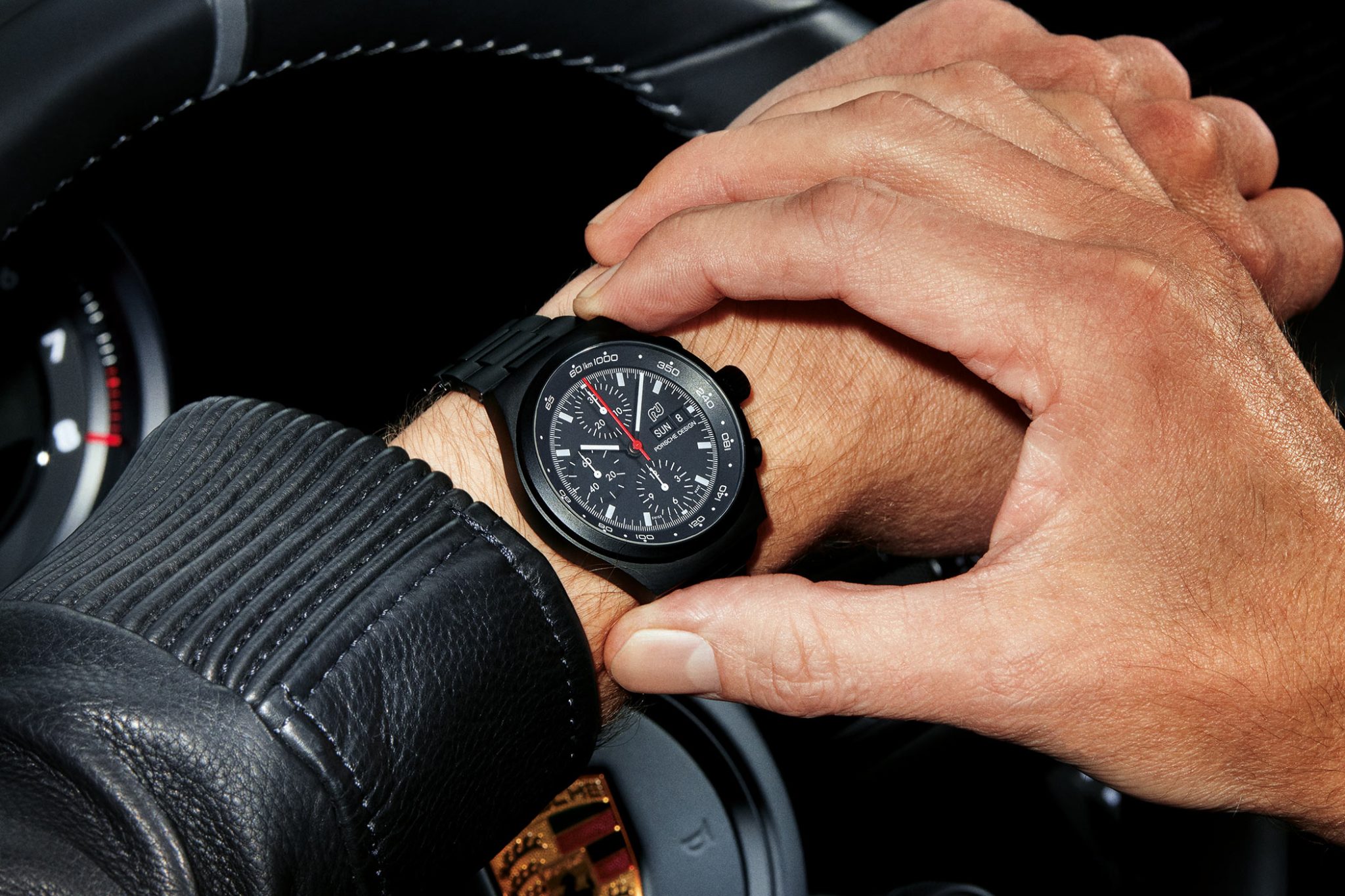
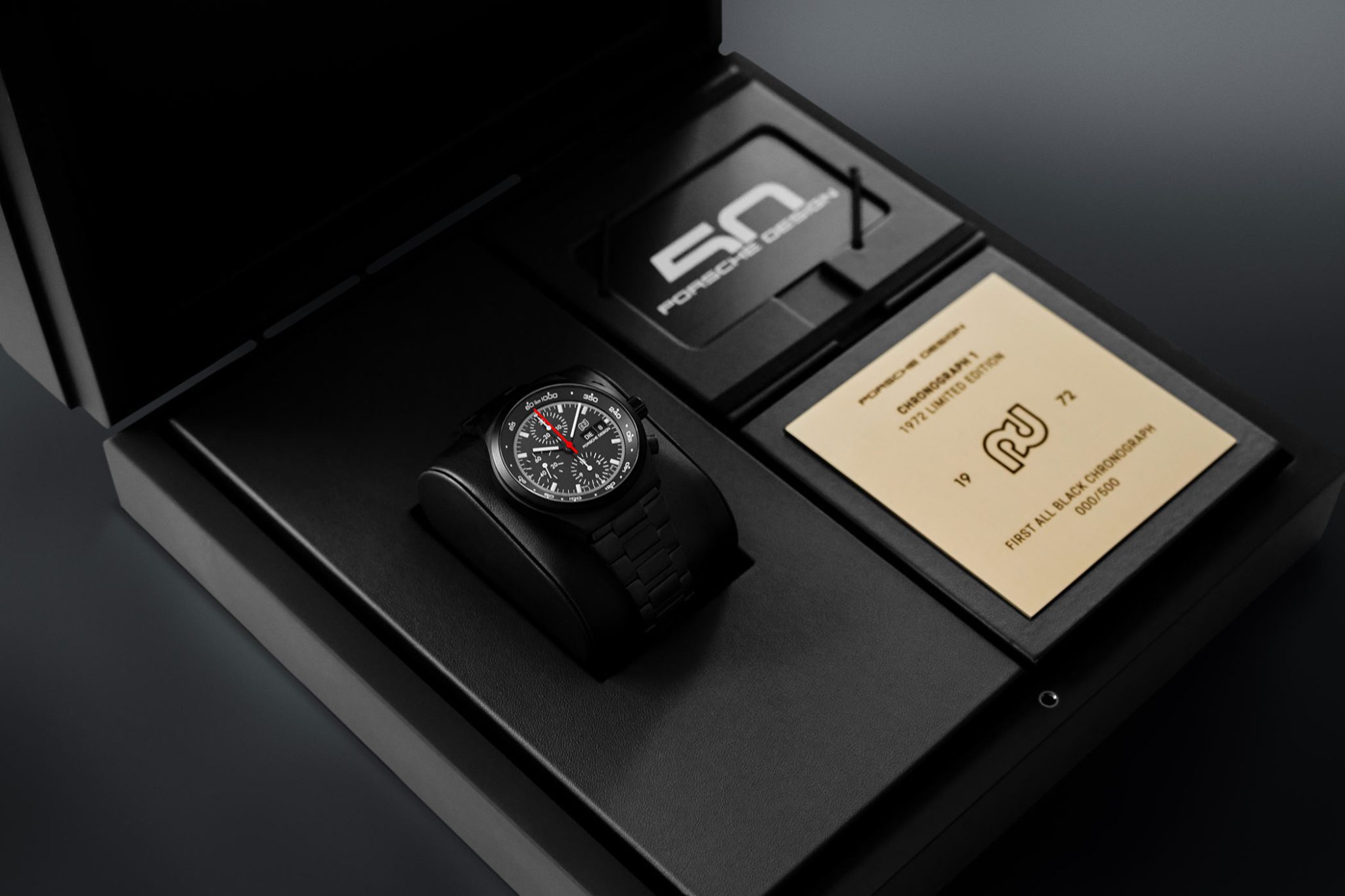
Chronograph 1 Portfolio Expansion: Alongside Monobloc Actuator and Chronotimer
The return of the Chronograph 1 to the permanent portfolio would add a crucial historical cornerstone to Porsche Design’s watch offerings. Alongside modern collections such as the Monobloc Actuator and Chronotimer, the original watch completes the brand’s heritage.
So it would be a shame to present the Chronograph 1 only as a one-off anniversary edition, right? Heiler won’t say much, except for the meaningful admission that, ‘The watch will remain with us.’ So, it’s safe to assume that this chronograph will be a fourth – and rather weighty – piece in our watch portfolio, alongside the Monobloc Actuator, 1919 and Chronotimer Flyback. The original watch is back; and it’s back to remind us of the history of Porsche Design, and to successfully tell it on.
Key Takeaways:
- The Porsche Design Chronograph 1 was the world’s first entirely black wristwatch in 1972
- Limited Edition 2022: 500 pieces at 6,972 euros, featuring a titanium case Ferdinand Alexander Porsche translated 911 design into watchmaking
- Celebrity Status: Worn by Tom Cruise (Top Gun), Mario Andretti, and others
- Collector Market: Vintage models, especially military variants, are highly coveted
- Future: Permanent return to the portfolio is likely
Technical Specifications – Chronograph 1 – 1972 Limited Edition:
- Diameter: 40.8 mm
- Height: 14.5 mm
- Material: Titanium (case, bracelet, clasp)
- Movement: WERK 01.140
- Limited to: 500 pieces
- Price: 6,972 euros
- Design: Typography faithful to the original 1972 model
